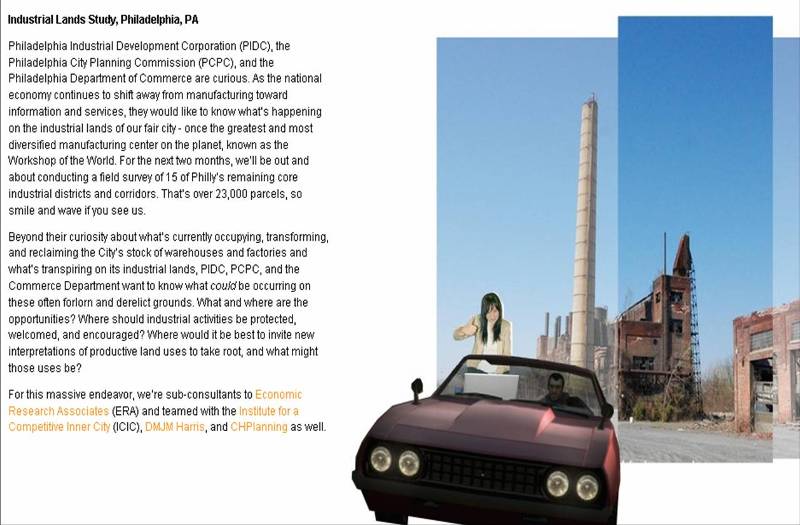Zoning Code must maintain industrial chops

June 10
By Thomas J. Walsh
For PlanPhilly
Think you know the percentage of Philadelphians working in the industrial sector?
Probably not many, right? The phrase “Workshop of the World,” when applied to Philadelphia, is almost always prefixed with “the former,” or “once known as.” The number of manufacturing facilities in the city, and their accompanying jobs, peaked decades ago – before the big residential flight to the suburbs, even, or the outsourcing of blue-collar jobs to the Sun Belt and nations with multitudes of low-wage, non-union workers.
So would you have guessed that one in five jobs in the city are still industrial? That’s the tally from recent research coordinated by the Philadelphia Industrial Development Corp. (PIDC), the quasi-public agency that has for years been the city’s de facto economic development shop.
Citywide, there are about 104,300 industrial jobs, said John Grady, senior vice president at PIDC. Grady spoke Wednesday morning at the monthly meeting of the Zoning Code Commission, charged with re-writing the city’s 1950s-era zoning code, which has aged badly.
Also present at the meeting was Prema Katari Gupta, PIDC’s real estate manager. The “Industrial Land Use and Market Study” that is now being wrapped up has been “an attempt to come to grips with the industrial properties that we have,” Grady said. “There are a lot.”
The jobs number is down by almost 19 percent from the 1998 total of more than 128,400, but the total still accounts for 20 percent of the city’s job base – behind only those employed in government, healthcare and education. That’s significant, since “eds and meds” (healthcare and education, including teaching hospitals, collectively) is the main area of growth mentioned by city and regional economists, especially within the context of the current national recession.
“This is a wide range of people in a wide range of skill sets,” Grady said. “Compared to retail and hospitality jobs, they are better paid and have better opportunities” for skill development and career advancement. The average industrial job provides an income of more than $50,000, he said, combining for more than $5 billion in total city payroll and about $323 billion in taxes for city and state coffers.
Planning Commission Executive Director Alan Greenberger has stated publicly several times since he was hired last year that he has been looking forward to the results of this three-year study, a combined effort from the Planning Commission, PIDC and the city’s Commerce Department. Its goal has been to identify, with a fair degree of specificity, the city’s industrial market and land use, along with “the real or perceived mismatch of industrial land supply and the demands of modern industrial users.”
Along with the city agencies, consultants included Los Angeles-based Economic Research Associates (ERA), the Boston-based Institute for a Competitive Inner City (ICIC) and the Philly-based Interface Studio LLC.
There are more than 17,800 acres of city land zoned as “industrial,” Grady reported. Most of that land (15,433 acres) is in 15 industrial districts, with the most significant density in Northeast Philly and in the southern portions of the city, from the ports to the Navy Yard to the airport.
About 4,300 acres of the acres zoned for industrial is not being used for industrial purposes, or is vacant.
Among the many parcels that total some 163 million square feet of space, there are about 2,300 buildings (described as “flex,” “heavy industrial,” “light industrial” or “warehouse distribution,” for example). People from Interface Studio, Grady said, have visited and surveyed every single one of them.
The study also includes recommendations for vacant or under-utilized industrially zoned lands, such as portions of the east bank of the Schuylkill River across from University City – to “capture some of that growth.”
“It’s a great opportunity for single-story flex buildings related to the universities,” Grady said. Nearby existing rail lines, refineries and highways, it is “ideally suited for some sort of industrial or manufacturing uses. We need to upgrade our marketing.”
Notes
ZCC Executive Director Eva Gladstein told the commissioners that she recently visited with colleagues in Baltimore and Washington, D.C., cities in the midst of their own zoning code re-writes.
Each has different organizational structures, she said, but Philadelphia deserves credit for “having the most robust and participatory” group.
“I think we are ahead in terms of making sure all interest groups are at the table,” Goldstein said.
Goldstein and Greenberger met last week with Mayor Michael Nutter, outlining plans to work with him over the summer in preparation of briefing the full City Council in the fall on how the ZCC is proceeding.
“It will be incumbent upon all of you as commissioners to be part of the advocacy,” Greenberger said. “We need all 31 people to own this information and to be actively discussing it.”
Contact the reporter at thomaswalsh1@gmail.com.
ON THE WEB:
Interface Studio: http://interface-studio.com/currently/industrial-land-use-project-phila-pa/
ERA: http://www.econres.com/
ICIC: http://www.icic.org/site/pp.aspx?c=fnJNKPNhFiG&b=3416281
WHYY is your source for fact-based, in-depth journalism and information. As a nonprofit organization, we rely on financial support from readers like you. Please give today.



